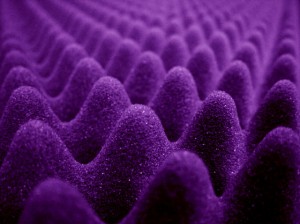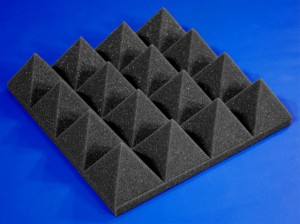When evaluating a product for purchase, quality, performance, and cost-effectiveness are always top of mind. But there’s one factor that should never be overlooked—safety. No matter how functional or affordable a product may be, it’s not a wise investment if it poses a risk to you, your space, or your project. That’s why we prioritize product safety at every level. All of our acoustic foam products meet the ASTM E84 flame retardancy standard, and not just any rating, but the highest available: Class A.
What Is ASTM E84 and Why Is It Important?
Developed by ASTM International (formerly the American Society for Testing and Materials), the ASTM E84 test is a standardized method used to measure how building materials react when exposed to fire. Specifically, it assesses two critical factors:
- Flame Spread Index (FSI): How quickly flames move across a material.
- Smoke Developed Index (SDI): How much smoke is produced as the material burns.
In testing, materials are evaluated against two control substances: fiber-reinforced cement board, which doesn’t burn or smoke, and red oak, which represents high flammability. Based on how a material performs compared to these controls, it receives a rating.
The resulting scores are then categorized into three classes:
- Class A (or Class 1): FSI 0–25; the most fire-retardant category.
- Class B (Class 2): FSI 26–75; moderate flame spread.
- Class C (Class 3): FSI 76–200; significant flame spread.
All three classes must score below 450 for SDI to qualify for classification. While this test doesn’t replicate real-world fire conditions exactly, it offers a valuable, consistent comparison for evaluating product safety, especially when choosing between acoustic foam options.
Our Class A Acoustic Foam Line

Each of our products labeled as flame-retardant has been formulated from the inside out, not just sprayed with a coating after production. That means the fire-retardant properties are built into the foam’s structure for more reliable, longer-lasting protection.
Our Class A-rated acoustic foam products include:
- Eggcrate foam
- Wedge foam
- Pyramid foam
- Corner bass absorbers
- Broadband absorbers
- Wall and ceiling tiles
- Drop ceiling panels
- Monitor isolation wedges
- Cubed and rectangular blocks

Available in 12 dynamic colors, these foams are not only functional but also aesthetically versatile. Whether you’re soundproofing a studio, home theater, office, or industrial workspace, our Class A foam helps reduce echo and improve acoustics while giving you the confidence of built-in fire safety.
Tested and Proven Performance
We don’t just talk about safety—we test for it. In a 2010 third-party evaluation of our 2-inch wedge acoustic foam, results showed an impressive 25 FSI and 250 SDI, qualifying for a Class A rating. By comparison, in a 2004 evaluation, a leading competitor’s similar foam product earned a Class B rating with 35 FSI and 350 SDI. The difference? Our product is less prone to rapid flame spread and smoke production, offering better peace of mind in demanding environments.
Use Foam Responsibly: Shop Foam by Mail
Despite these advantages, it’s important to remember that no foam is entirely fireproof. Even Class A materials can catch fire under the right conditions. That’s why proper installation and usage are key:
- Never place open flame or high-heat devices near foam.
- Avoid smoking in areas where foam is installed.
- Always consult with fire safety professionals if installing in sensitive or high-risk areas.
We’re proud to offer solutions that meet high safety standards without compromising performance. If you have questions about which acoustic foam is right for your space, our customer service team is here to help. Contact us today for assistance!


hello my name is Justin i have question about your fire retardant foam was wondering if you can answer some of my qiestions about your product when it comes to pricing and if reaches astm e84 requirments the dimesnions i need covered is for 2x24x72 standard foam that needs to reach those standards 3-6lbs and i need pricing for as much information as your able to give
Our acoustic polyurethane foam products and acosutic / color sheets have been tested to ASTM-E84. Links to those products are below:
Acoustic Foam Products
Acoustic-Color Foam Sheets